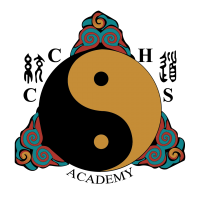Acupuncture Treatment of the Jing-Jin (“Sinew Meridians”): Intro  Dr. Anthony Von der Muhll, L.Ac., DAOM, DNBAO, FAIPM
Dr. Anthony Von der Muhll, L.Ac., DAOM, DNBAO, FAIPM
Dr. Anthony Von der Muhll,
L.Ac., DAOM, DNBAO, FAIPM
specializes in sports, orthopedic and neuro-musculoskeletal injuries and pain conditions. He became Licensed as an Acupuncturist in 2003, and was the first graduate of the Five Branches University’s’ Integrative Sports Medicine program. He has served as a Clinical Instructor and Associate Professor at the Five Branches since 2005, and as an Instructor in the Doctorate of Acupuncture and Oriental Medicine Program of the Academy of Chinese Culture and Health Sciences beginning in 2017. He is also a Diplomate of the National Board of Acupuncture Orthopedics, a Fellow of the American Academy of Pain Management, and certified as a Personal Trainer through the American College of Sports Medicine. He is also one of the few traditionally-trained acupuncturists who has also become certified as a Myofascial Trigger Point Therapist (dry needling) through Myopain Seminars. He has 20 years of clinical experience as a sports massage therapist, physical therapy aide, athletic training assistant, and licensed acupuncturist in multi-disciplinary clinics, including SpineMed Associates and the PRIME Pain Medicine Institute. He has also served as an Expert Witness for the California Acupuncture Board (CAB) and in civil malpractice litigation.
January 7, 2022-January 7, 2022 9:00 AM-10:00 AM
Room: 101
1 Category 1 CAB units available
Type: Online Via Livestream or Recorded Lectures
Description:
The classical 经筋jing-jin (“sinew meridians”) of Chinese medicine describe tracts of myofascial tissues that roughly follow the jing-luo (“primary meridians”).
Understanding the jing-jin can guide clinicians from where pain is felt, to distal and proximal locations that also may need treatment. Knowing the muscles, tendons, joints and ligaments of each jing-jin, and how to examine and treat them is a valuable complement to the cross-sectional approach of contemporary orthopedics, and opens up avenues towards holistic rehabilitation from injuries, pain and disability, including:
- Decreased muscle-tendon pain and tension, and improved strength and function
- Decreased joint pain, and increased flexibility and range-of-motion
- Improved posture, movement, and whole-body biomechanics
This introductory class prepares students to get the most out of the 4-part Jing-Jin series by reviewing the general structure and functions of the jing-jin, as well as classical and modern examination and treatment techniques, including:
- Comparison of ancient descriptions of the jing-jin with contemporary dissection studies and functional analyses of myofascial tracts and kinematic chains
- Clinical significance of postural vs. phasic muscles and balance between agonist/antagonist muscle groups
- Clinical assessment of the movement, strength, and joint stabilization functions of jing-jin muscles and joints
- Introduction to anatomical charts of myofascial referred pain patterns, including muscle attachment sites and functions, innervation, and trigger, motor and Chinese new/miscellaneous points. (The full series covers over 100 muscles and connective tissue structures.)
Treatment of jing-jin injuries and pain with traditional and modern acupuncture and other AOM therapies.
- Classical needling of the jing-jin, including “crack needling,” “short puncture,” “superficial puncture,”hegu puncture, and shu-point/periosteal puncture
- Myofascial trigger pointand joint stabilization/mobilization (“prolo-acupuncture”) needling
- Cupping, gua sha, and other manual therapies
Course Objectives:
This introductory class prepares students to get the most out of the 4-part Jing-Jin series by reviewing the general structure and functions of the jing-jin, as well as classical and modern examination and treatment techniques, including:
- Comparison of ancient descriptions of the jing-jin with contemporary dissection studies and functional analyses of myofascial tracts and kinematic chains
- Clinical significance of postural vs. phasic muscles and balance between agonist/antagonist muscle groups
- Clinical assessment of the movement, strength, and joint stabilization functions of jing-jin muscles and joints
- Introduction to anatomical charts of myofascial referred pain patterns, including muscle attachment sites and functions, innervation, and trigger, motor and Chinese new/miscellaneous points. (The full series covers over 100 muscles and connective tissue structures.)
